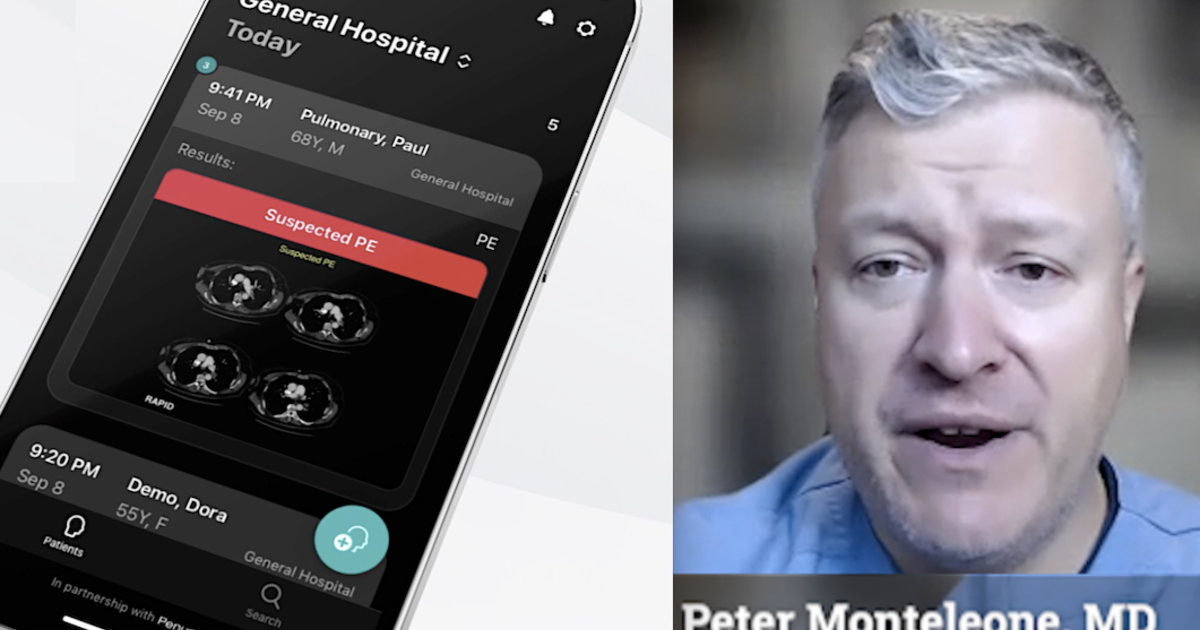Fitness
AI critical care software revolutionizes emergency response

He said the instant communication ensures that team members are informed and can coordinate their response without delay, many times before the emergency department officially alerts them.
Monteleone detailed the efficiency gains as follows: “We can now discuss potential high-risk PE cases among the PERT team before the primary care providers are even aware. This proactive approach allows us to intervene sooner, which is crucial given the busy nature of emergency rooms today.”
The technology also plays a pivotal role in clinical trials, enhancing Ascension Health’s research capabilities. “Our research coordinators can screen every incoming PE case for eligibility in clinical trials, significantly improving our ability to study and advance treatment options,” Monteleone said.
The criteria for determining emergent treatment have also been refined. High-risk cases are quickly identified based on physiological and hemodynamic changes, such as low blood pressure or tachycardia, which may necessitate immediate interventions like systemic IV thrombolytic medications or mechanical thrombectomy. The AI system also assists by an automated evaluation of right ventricular strain through imaging and presenting the measurements and imaging showing how the measurements were made. Monteleone said this information can quickly impact the direction of care they provide, with significant strain indicating the need for more aggressive interventional therapy.
Critical care teams are embracing the technology because it combines 24/7 automated surveillance, a first pass radiology read to triage patients for the teams and for radiology reading lists, sends alerts, links all the relevant patient data and imaging, and also provides a messaging platform for care teams. This all boosts efficiency and helps reduce the time to treatment.
This technology is offered through vendors such as Viz.AI, Aidoc and RapidAI. Monteleone said they adopted RapidAI for their PERT because it was already in use at the hospital for stroke and the neuro interventionalists said it was extremely helpful.
“RapidAI’s diagnostic capabilities embedded in our CT scanners allow for real-time assessment and decision-making across multiple hospitals in our system. This connectivity and the ability to provide expert input remotely have been game-changing,” Monteleone added.
The Ascension PERT uses a hub and spoke system where PERT members at larger hospitals can help smaller hospitals with less resources address a series PE case they are alerted about. This may include sending an ECMO team to that hospital to support the patient, or transferring the patient to a center where they can receive more urgent catheter based therapies.
The success of this AI integration underscores the potential for widespread adoption and the standardization of advanced care practices. He said PE care is moving to a PERT team approach at most health systems to enable faster response and better outcomes for patients. Monteleone emphasized the importance of enthusiasm and leadership in implementing such programs.
“We no longer need an extensive network of subspecialties to provide top-tier care. With champions of the program and the right technology, we can elevate care standards universally,” Monteleone explained. “There’s going to be this elevation of care where it’s no longer an ivory tower that cares for PE, it’s the base expectation that these tools are available everywhere.”










